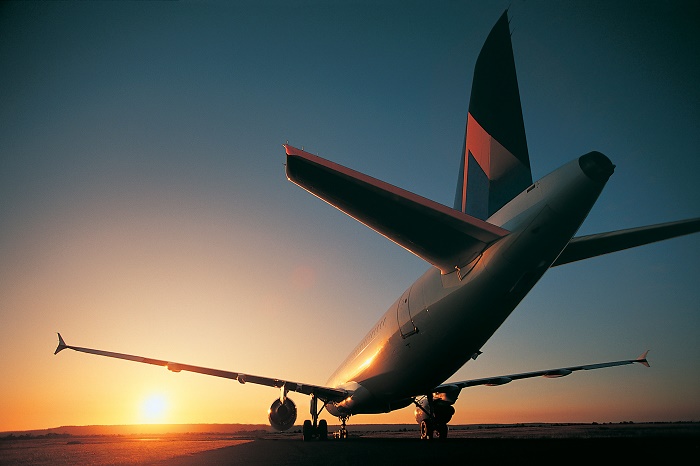Sounds familiar? Most of us have experienced some level of discomfort on an aircraft, and if you’re stuck in economy for a transatlantic flight from Europe to New York or beyond, the journey is rarely pleasant.
There are reasons for that, of course. Modern aircraft, contrary to popular belief, don’t offer the kind of air pressure that we would experience at sea level – instead, “cabin altitude” is usually between 1,828 metres and 2,438 metres, the height of a small mountain.
This means less oxygen and expansion of gases in our body cavities. There are other stresses too: flight delays, going through airport security, noise and vibration on board, tasteless food, sharp ups and downs in temperature, low humidity, cramped seating and jet lag – to name but a few.
But there are ways to make your journey just that much more bearable.
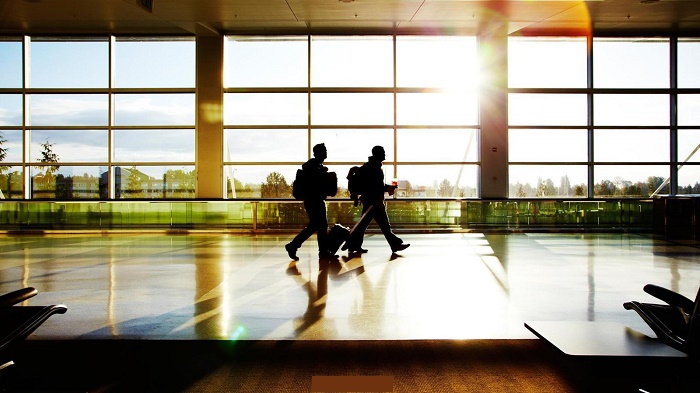
Manage pre-flight stress
One thing, says Rob Bor, a clinical psychologist at Royal Free London NHS Foundation Trust, is to get ready for travel in advance, to keep stress levels down.
“A surprising number of people don’t prepare themselves by checking their documentation beforehand, making sure their passport is in place and knowing their travel times and which airport they are going to,” says Bor.
They check it the same day, and that is not good enough, he says. “Scan your passport and keep it in your email system in case something happens,” advises Bor.
For your trip to the airport, factor in potential delays such as transport strikes, traffic jams, and weather conditions.
Choose your seat
Choose your seat wisely using websites such as SeatGuru, owned by TripAdvisor.
It uses colour-coded seating charts tailored for each aircraft and airline, advising passengers which seats to dodge because they are next to the toilets, ultra-narrow or don`t recline, and so on.
Experts say that sitting near the plane`s wing means less turbulence, as wings are located close to the plane`s centre of gravity. And if you forget to choose your seat, ask at the gate – chances are that you might snag an empty row, provided the flight is not full.
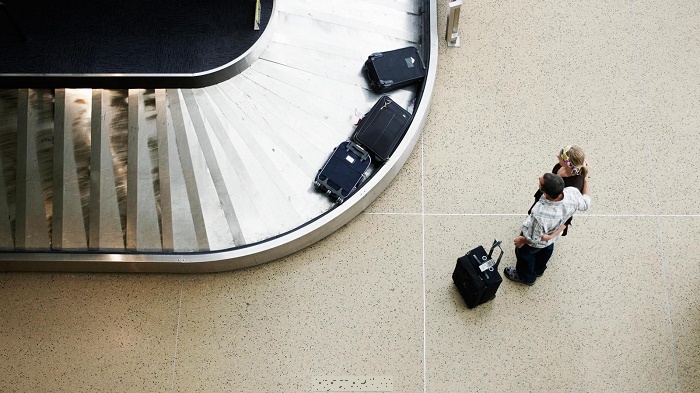
Travel light
It’s important to appreciate the sheer amount of physical activity involved in air travel.
Struggling with more luggage than you can sensibly handle adds to the pressure and overall discomfort of travel, says Richard Dawood, a GP specialising in Travel Medicine at London`s Fleet Street Clinic.
Dragging heavy hand luggage around also “raises the risk of muscle strains and musculoskeletal problems that will only be compounded by immobility and cramped seating once on board,” he adds.
Starve the jet lag
Another tip is to fast before a long-haul flight, because it eases your jet lag. Harvard researchers say that starving for about 16 hours before boarding a plane can help travellers engage a special clock in the brain that will make adjusting to a new time zone easier. This clock is different from the body’s biological circadian clock that responds to light and tells us when to wake up, sleep and eat.
Eat carefully
Say you’ve made it to the airport in plenty of time, prepared yourself for jet lag, and even passed security without a hitch.
Before boarding, don’t indulge in greasy, fried or similar fast food; also steer clear of vegetables that are likely to give you gas, such as onions, broccoli, cauliflower, cabbage, and beans.
For a bloat-and-flatulence-free trip, also avoid alcohol and fizzy drinks. In 2006, an American Airlines flight was forced to make an emergency landing because a flatulent passenger started burning matches to conceal the unpleasant smell. She admitted to it after bomb-sniffing dogs found the extinguished matches.
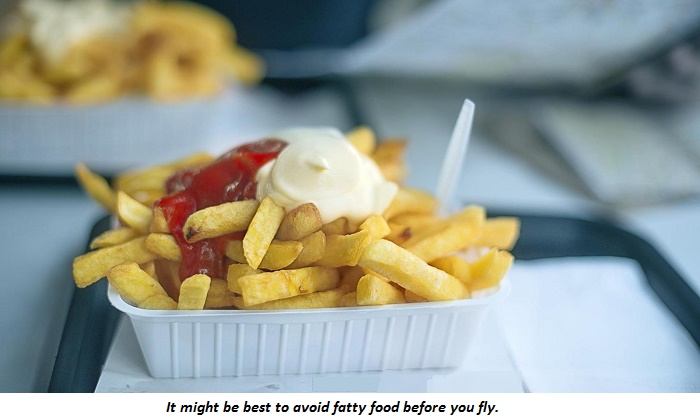
Watch what you eat in the air
You are what you eat, and that’s especially true on board a plane, as long-haul flight disrupts your biological clock. “Eat healthy and light, food that’s easy to digest – such as some fruit or a salad,” says Alwin van Drongelen, a chronobiologist at the VU University Medical Center in Amsterdam.
The timing of meals is also an important factor in adaptation to a new time zone, he adds:
“Airlines often try to stuff you with a breakfast just before landing, while your body clock thinks it is the middle of the night. It would be wise to leave the beans and sausages, and stick with water and a cracker.”
Carb-rich foods such as pasta, whole grain bread, and oatmeal are all good too, because they induce the secretion of insulin, which makes it easier for our bodies to avoid jet lag.
Fatty meals will leave you feeling full for longer, which is uncomfortable if you want to sleep, says Dawood.
Bringing your own healthy snack on board might be a good option; alternatively, you could request a special meal before you travel. Special meals also mean you’ll be served first.
On some planes there also might be health risks, especially when the flight originates in countries with generally poor hygiene standards; and if there are long delays, says Dawood, one shouldn’t “assume all airline food must automatically be safe”.
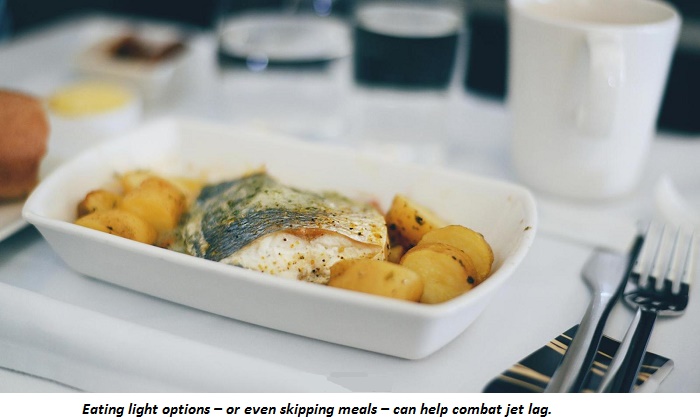
Drink and fly
When it comes to liquids, don’t restrict your fluid intake, even if you’re stuck in the middle seat and don’t want to disturb other passengers to go to the toilet.
“This is a really bad approach, and is one reason why bladder infections and cystitis are common in women following long haul flights,” says Dawood. Instead, he says, drink plenty – at least half-a-litre of liquid for every three hours in the air.
Drinking alcohol increases dehydration. The humidity on board is already very low, at just 5-15%, as the air drawn into the cabin comes from a high altitude that tends to be completely devoid of moisture.
Not only will alcohol make you want to drink more, but the low humidity also means that “one glass of alcohol is equivalent to having two on the ground,” says Bor.
Mind your health
Low humidity also strains our nose and throat, skin, and eyes – especially if you wear contact lenses.
People with breathing problems or heavy smokers will be particularly at risk, says Brian McCrary, medical director at Glendale Regional Public Safety Center Health Clinic in Scottsdale, Arizona.
So if you sometimes need an inhaler, don’t forget to pack it somewhere in easy reach.
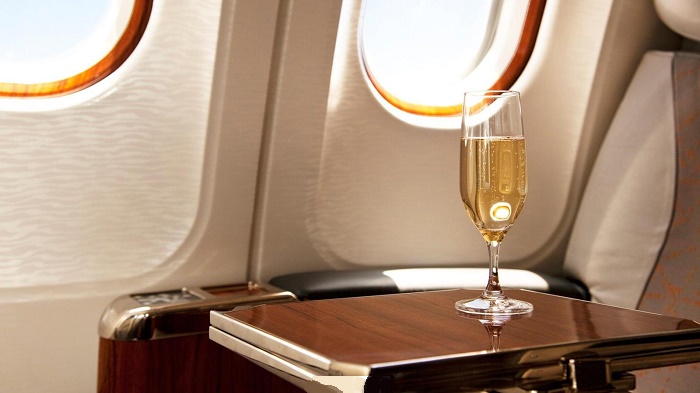
Should you suddenly struggle for air on board, put a damp cloth on your face and breathe through your mouth, and don’t forget to drink plenty of water.
You could also complement the water with an electrolyte solution. And if you’re really struggling to breathe, ask the crew for extra oxygen.
Another good idea is to have a water spray on you, as well as a chapstick and a skin moisturiser. These items can be part of your small travel kit, along with a deodorant, toothpaste, toothbrush, a comb, sealed snacks, vitamin C, hand gel and clean underwear (just make sure you’ve packed all the liquids in one clear plastic bag when you go through security).
Hit snooze
Sleeping on board can be a challenge for many, especially in economy class. If you can upgrade – do so, as sleeping in business or first class with seats that turn into beds will be much more comfortable.
If you can’t, think of spending a little extra on a seat with more legroom. Wear loose clothing, and dress with plenty of layers, because of erratic temperatures on long flights, advises David Gradwell, professor of Aerospace Medicine at King’s College London.
“Thermal comfort on board the aircraft is generally controlled in the cabin as a whole or by zones, but some may feel it to be too warm or too cool,” he says. Also pack warm comfy socks to walk around, and a scarf, or a giant shawl – which can also be used as a blanket.
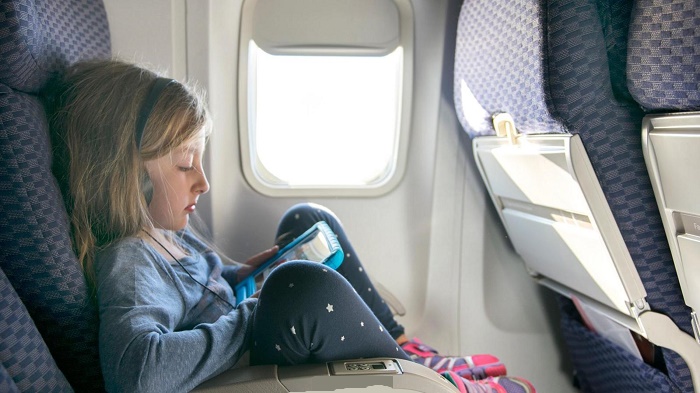
Don an eye mask, and don’t forget a neck pillow. “If your neck is leaning to the side, the oxygen flow gets interrupted and it’ll wake you up, leading to an uncomfortable journey,” says Bor.
Another alternative could be the BauBax, which its makers immodestly call the “world’s best travel jacket” – with 15 in-built features that range from an inflatable neck pillow and an eye mask, to a hood, gloves, a drink holder and multiple compartments to store phones, tablets, chargers and even a blanket.
With prices ranging from $149 to $199 (£115 to £153), this Indiegogo project might be worth a look.
Since most aeroplane seats are C-shaped, many passengers end up with aching necks and backs. Wedge a pillow, sweater or a blanket behind your lower back, to support your spine and keep it in its natural shape.
Block noise
Noise-cancelling headphones are an immensely pleasant, albeit expensive way of blocking the white noise from the engines and other distractions around you. In-flight cabin noise is more intense than what we are normally exposed to, typically 80 dBA during cruise, 65 dBA during taxi, and 85 dBA at take-off and landing.
Guidelines for acceptable noise levels for many work environments range from around 40 dBA in an office to 60 dBA for a delivery area, says Brett Molesworth of the School of Aviation at the University of New South Wales in Sydney, Australia.
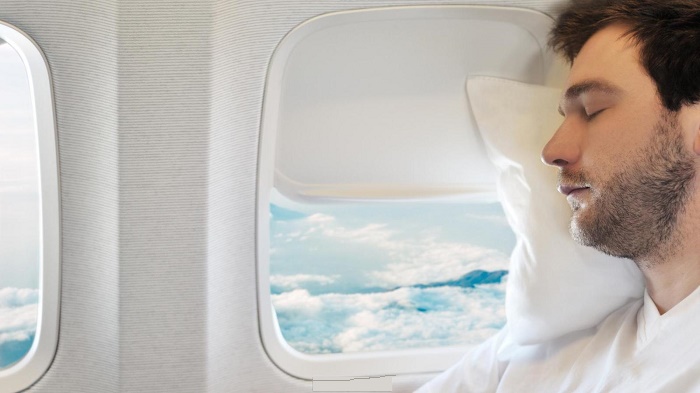
Cabin noise has been found to affect memory and induce fatigue: “80 dBA of noise for two hours reduces recognition memory performance by approximately 20%,” says Molesworth.
In his studies, he found that the effect 65dBA noise had similar effects to drinking alcohol.
In the future, travellers may be able to sleep even better with devices such as Boeing’s recently patented Transport Vehicle Upright Sleep Support System.
It merges a cushion, a backpack and a pillow, supporting your head and chest. But in the meantime, if you really can’t sleep on board, opt for an over-the-counter sleep aid, says Bor – for example synthetic melatonin (the hormone that controls your body’s sleeping and waking cycles).
In a study, participants took 5mg of melatonin a day for three days before a long-haul flight, another dose in the air, and again a dose a day for three days after the flight – and found that the sleep aid kept jet lag at bay. If you take melatonin only after your flight, before bed, it may not be of much help. () Another option is a sleep medication such as Ambien, says Bor.
But it’s advisable to try any aids before you fly, as for some people certain drugs may act more like a stimulant than a sleep aid.
Move it
Another problem for air travellers – especially on longer flights – is the risk of deep vein thrombosis (DVT), the formation of blood clots in deep veins.
They are caused by being seated for too long, leading to swollen feet and ankles, and leg pain. Clots in the legs are not serious, but at times they may travel to the lungs and cause chest pain and shortness of breath – or worse.
If you think you are at risk of DVT, see your doctor before you travel and consider wearing compression stockings, which apply gentle pressure to the ankle to help the blood flow.
It is important, though, that they are the correct size, properly fitted and put on correctly, says Michael Bagshaw, professor of aviation medicine at King’s College London. There is no benefit from taking aspirin, he adds, but moving about to stop the blood pooling in your feet can help.

Don’t place luggage under the seat in front of you, as that reduces the ability to move your legs. And Gradwell says that it’s important that you know if you’re in a high-risk group: i.e. if you have thrombophilia (that is, enhanced clotting activity), have had a recent major surgery or lower limb trauma, personal or family history of DVT, you’re over 40 years old, have cancer, are pregnant or taking the oral contraceptive pill.
This may all seem like a lot of advice – but then the effects of flying thousands of miles in a cramped, pressurised tube shouldn’t be underestimated.








